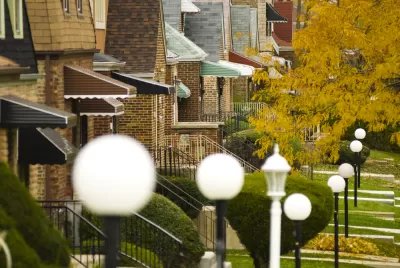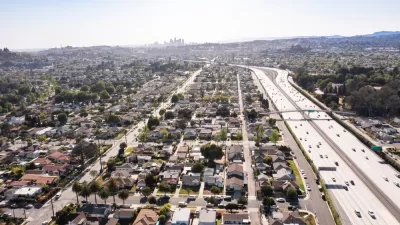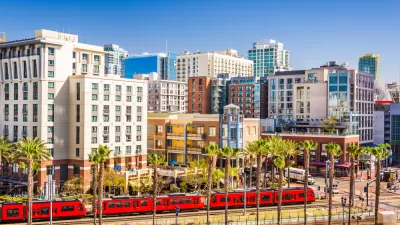Many suburban areas outside thriving urban cores are struggling to deliver vital services and maintain property values as job and population growth stagnates. It's time to confront the realities of those communities, according to this article.

"There’s been endless discussion on the impact of new residents in core cities, but we’re not talking enough about what’s happening in the suburbs and whether those peripheral areas are ready for the accelerating changes taking place there," writes Pete Saunders to begin a discussion about race and the suburbs. "Growing numbers of African-Americans, Latinos and Asians are finding new homes on the metro periphery -- contributing to the diversification of American suburbia but also to its difficult problems."
Saunders begins with south Cook County, in Illinois outside of Chicago, as an example of a diversifying suburban area that has experienced more of the "downsides of contemporary suburbia than the benefits":
Its residents were impacted heavily by manufacturing job loss, and the area was especially vulnerable to the run-up of subprime mortgages that helped cause the Great Recession. As a result, incomes and property values have stagnated. In 2017, the city of Chicago surpassed suburban south Cook overall in median household income for the first time since 1980. Median home values in south Cook remain about half as much as for the metro area.
As noted by Saunders, south Cook County is far from alone. Similar examples can be found in Maryland, Georgia, and Missouri, for instance. These communities will require a number of policy strategies to deal with the challenges of stagnant growth and property values.
FULL STORY: It's Time for Suburbs to Talk About Race

Study: Maui’s Plan to Convert Vacation Rentals to Long-Term Housing Could Cause Nearly $1 Billion Economic Loss
The plan would reduce visitor accommodation by 25,% resulting in 1,900 jobs lost.

North Texas Transit Leaders Tout Benefits of TOD for Growing Region
At a summit focused on transit-oriented development, policymakers discussed how North Texas’ expanded light rail system can serve as a tool for economic growth.

Why Should We Subsidize Public Transportation?
Many public transit agencies face financial stress due to rising costs, declining fare revenue, and declining subsidies. Transit advocates must provide a strong business case for increasing public transit funding.

How to Make US Trains Faster
Changes to boarding platforms and a switch to electric trains could improve U.S. passenger rail service without the added cost of high-speed rail.

Columbia’s Revitalized ‘Loop’ Is a Hub for Local Entrepreneurs
A focus on small businesses is helping a commercial corridor in Columbia, Missouri thrive.

Invasive Insect Threatens Minnesota’s Ash Forests
The Emerald Ash Borer is a rapidly spreading invasive pest threatening Minnesota’s ash trees, and homeowners are encouraged to plant diverse replacement species, avoid moving ash firewood, and monitor for signs of infestation.
Urban Design for Planners 1: Software Tools
This six-course series explores essential urban design concepts using open source software and equips planners with the tools they need to participate fully in the urban design process.
Planning for Universal Design
Learn the tools for implementing Universal Design in planning regulations.
City of Santa Clarita
Ascent Environmental
Institute for Housing and Urban Development Studies (IHS)
City of Grandview
Harvard GSD Executive Education
Toledo-Lucas County Plan Commissions
Salt Lake City
NYU Wagner Graduate School of Public Service





























